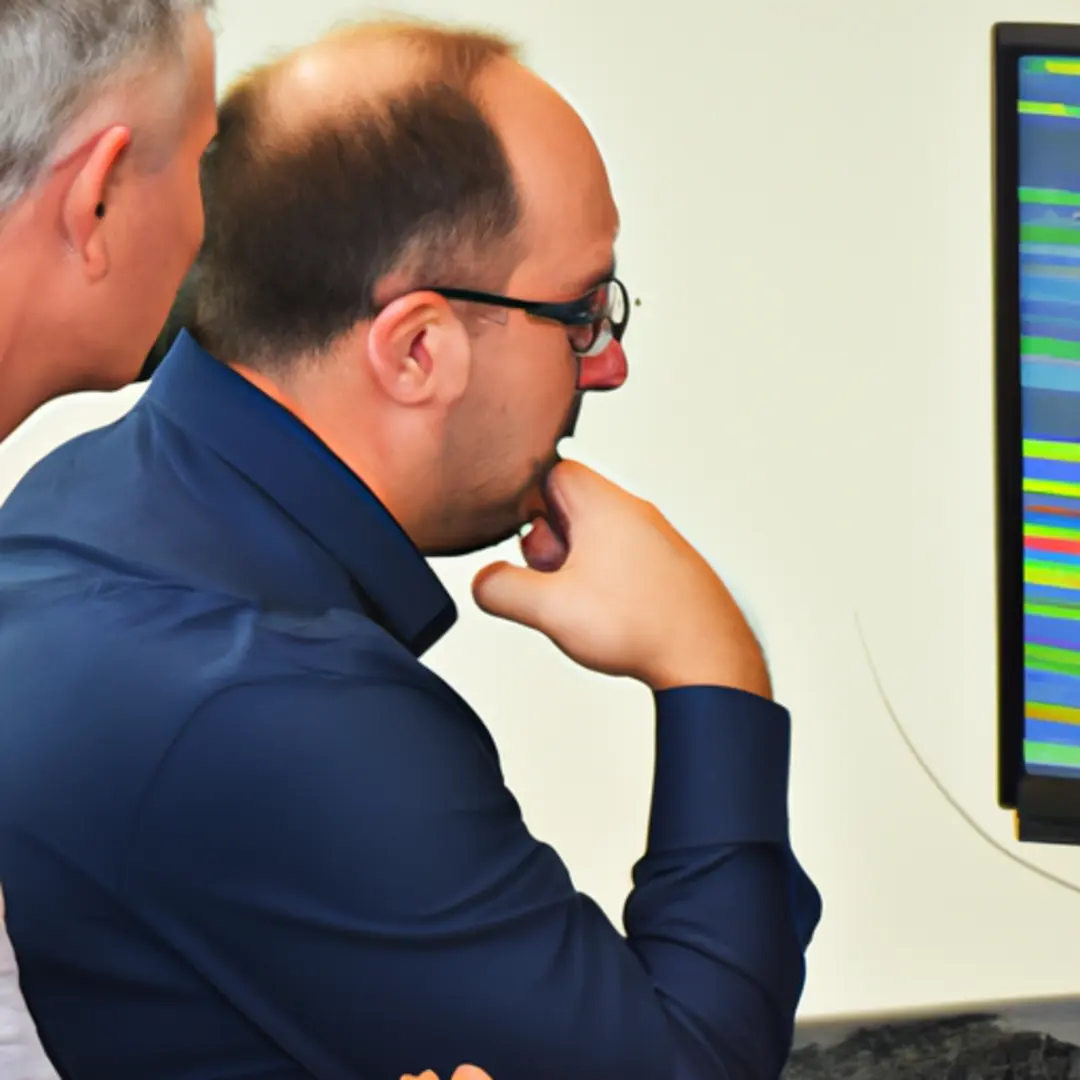Table of contents
- Introduction to Risk Assessment in Finance
- Understanding Different Types of Risks in Finance
- Key Components of Financial Risk Assessment
- The Risk Assessment Process: A Step-by-Step Guide
- Tools and Models Used in Financial Risk Assessment
- Integrating Risk Assessment into Financial Planning
- Regulatory Frameworks and Their Impact on Risk Assessment
- Risk Assessment in Different Financial Sectors
- Challenges in Financial Risk Assessment
- Best Practices in Financial Risk Assessment
- The Future of Risk Assessment in Finance
- Conclusion
Introduction to Risk Assessment in Finance

When it comes to finance, risk is an inherent part of the game. Whether you’re an individual investor, a financial institution, or a multinational corporation, understanding and managing risk is crucial to your financial success. This is where financial risk assessment comes into play.
What is Risk Assessment in Finance?
Risk assessment in finance is a systematic process that involves identifying, analyzing, and evaluating potential risks that could impact financial decisions and outcomes. It’s about understanding the likelihood and potential impact of various risks, which can then inform decision-making and the development of effective risk management strategies.
Why is Risk Assessment Important in Financial Decision-Making?
Risk assessment is a critical component of financial decision-making. It helps businesses and individuals understand the potential risks associated with their investments, projects, or operations. By identifying and evaluating these risks, financial professionals can make informed decisions, allocate resources effectively, and mitigate potential losses. In other words, risk assessment is a key tool for managing and controlling financial risk.
A Brief History of Risk Assessment in Finance
The practice of risk assessment in finance has evolved significantly over time, driven by various financial crises and regulatory changes. The global financial crisis of 2008, for example, highlighted the importance of risk assessment in identifying systemic risks and preventing financial instability. Since then, risk assessment practices have become more sophisticated and integrated into the operations of financial institutions.
Understanding Different Types of Risks in Finance

There are various types of risks in finance, each with its own characteristics and potential impacts. Understanding these risks is a crucial part of the risk assessment process.
Market Risk
Market risk refers to the potential losses that can arise from changes in market conditions, such as fluctuations in interest rates, exchange rates, or stock prices. It affects the value of financial instruments and portfolios, and is a key consideration for investors and financial institutions.
Credit Risk
Credit risk is the risk of default by borrowers or counterparties. It arises when borrowers fail to repay their debts or fulfill their financial obligations, leading to potential losses for lenders or investors. Credit risk is a major concern for banks, lenders, and bond investors.
Liquidity Risk
Liquidity risk refers to the risk of not being able to buy or sell assets quickly and at a fair price. It arises when there is a lack of market participants or when there is a sudden surge in demand for liquidity. Liquidity risk can affect the ability of investors and financial institutions to meet their financial obligations.
Operational Risk
Operational risk is the risk of losses resulting from inadequate or failed internal processes, people, or systems. It includes risks associated with fraud, errors, technology failures, and legal or regulatory compliance. Operational risk is a key concern for all types of organizations, including financial institutions.
Legal and Compliance Risk
Legal and compliance risk refers to the risk of non-compliance with laws, regulations, or industry standards. It includes risks associated with legal disputes, regulatory fines, reputational damage, and loss of business licenses. Legal and compliance risk is a major concern for regulated entities, such as banks and insurance companies.
Reputational Risk
Reputational risk is the risk of damage to an organization’s reputation or brand value. It arises from negative public perception, customer dissatisfaction, or unethical behavior, and can have significant financial consequences. Reputational risk is a key concern for all organizations, as it can affect their customer base, market share, and financial performance.
Key Components of Financial Risk Assessment

Financial risk assessment involves several key components, each of which plays a crucial role in the process.
Identifying Potential Risks
The first step in financial risk assessment is to identify potential risks that may affect financial decisions or outcomes. This involves analyzing internal and external factors, conducting risk assessments on specific projects or investments, and considering historical data and industry trends. Effective risk identification is crucial for understanding the potential risks and their potential impacts.
Measuring Risk Exposure
Once potential risks are identified, the next step is to measure the level of risk exposure. This involves quantifying the likelihood and potential impact of each risk, considering factors such as probability, severity, and correlation with other risks. Risk measurement is a key part of the risk assessment process, as it helps determine the potential impact of risks on financial outcomes.
Qualitative vs. Quantitative Risk Assessment
Risk assessment can be conducted using qualitative or quantitative methods. Qualitative risk assessment involves subjective judgments and qualitative descriptions of risks, while quantitative risk assessment involves numerical analysis and statistical models to quantify risks. Both methods have their strengths and weaknesses, and the choice between them depends on the nature of the risks and the availability of data.
Common Financial Risk Measurement Techniques
There are several common techniques for measuring financial risk, including value at risk (VaR), stress testing, scenario analysis, credit scoring models, and asset and portfolio risk models. These techniques help assess the potential losses or volatility associated with different risks, and are widely used in financial risk management.
The Risk Assessment Process: A Step-by-Step Guide

The risk assessment process involves several key steps, from establishing the context for risk assessment to developing a risk assessment matrix.
Establishing the Context for Risk Assessment
Before conducting risk assessment, it is important to establish the context by defining the objectives, scope, and constraints of the assessment. This helps ensure that the assessment is aligned with the organization’s goals and risk appetite. Establishing the context is a crucial first step in the risk assessment process.
Risk Identification Techniques
Risk identification techniques involve brainstorming, expert opinions, historical data analysis, and scenario planning to identify potential risks. This step helps create a comprehensive list of risks that need to be assessed. Effective risk identification is crucial for understanding the potential risks and their potential impacts.
Risk Analysis and Evaluation
Risk analysis involves assessing the likelihood and potential impact of each identified risk. This can be done using qualitative or quantitative methods, depending on the complexity and availability of data. Risk evaluation involves prioritizing risks based on their significance and potential consequences. Risk analysis and evaluation are key steps in the risk assessment process, as they help determine the potential impact of risks on financial outcomes.
Developing a Risk Assessment Matrix
A risk assessment matrix is a visual tool that helps categorize risks based on their likelihood and impact. It provides a structured framework for decision-making and helps prioritize risk mitigation efforts. A risk assessment matrix is a useful tool for visualizing and prioritizing risks.
Tools and Models Used in Financial Risk Assessment

There are several tools and models used in financial risk assessment, each with its own strengths and weaknesses.
Value at Risk (VaR)
Value at Risk (VaR) is a widely used risk measurement technique that estimates the maximum potential loss within a specified confidence level. It helps financial professionals understand the downside risk associated with their investments or portfolios. VaR is commonly used in finance, but it has its limitations, such as the assumption of normal distribution and the disregard of tail risk.
Stress Testing and Scenario Analysis
Stress testing and scenario analysis involve simulating extreme market conditions or hypothetical scenarios to assess the resilience of financial institutions or portfolios. These techniques help identify vulnerabilities and potential losses under adverse circumstances. Stress testing and scenario analysis are widely used in finance, particularly in risk management and regulatory compliance.
Credit Scoring Models
Credit scoring models are used to assess the creditworthiness of borrowers or counterparties. They analyze various factors, such as credit history, financial ratios, and industry trends, to assign a credit score that indicates the likelihood of default. Credit scoring models are widely used in lending and credit risk management.
Asset and Portfolio Risk Models
Asset and portfolio risk models use statistical techniques and historical data to estimate the risk and potential returns of different assets or portfolios. These models help investors optimize their asset allocation and manage risk effectively. Asset and portfolio risk models are widely used in investment management and financial planning.
Integrating Risk Assessment into Financial Planning

Risk assessment should be an integral part of financial planning. It helps identify potential risks that may impact financial outcomes, and enables proactive risk management strategies to be developed and implemented.
Aligning Risk Assessment with Business Objectives
Risk assessment should be aligned with the organization’s business objectives and risk appetite. It should consider the organization’s strategic goals, financial constraints, and risk tolerance to ensure that risk management efforts are effective and efficient. Aligning risk assessment with business objectives is crucial for ensuring that risk management is aligned with the organization’s goals and risk appetite.
Incorporating Risk Assessment into Strategic Planning
Risk assessment should be an integral part of strategic planning processes. It helps identify potential risks that may impact the achievement of strategic goals and enables proactive risk management strategies to be developed and implemented. Incorporating risk assessment into strategic planning is crucial for ensuring that risk management is proactive and strategic.
The Role of Risk Assessment in Investment Decisions
Risk assessment plays a crucial role in investment decisions by helping investors understand the potential risks and rewards associated with different investment opportunities. It enables informed decision-making and helps optimize risk-adjusted returns. Risk assessment is a key tool for informed investment decision-making.
Regulatory Frameworks and Their Impact on Risk Assessment

Regulatory frameworks have a significant impact on risk assessment practices in finance. They provide guidelines for risk management and impose requirements on financial institutions.
The Basel Accords and Their Impact on Risk Management
The Basel Accords are international regulatory frameworks that provide guidelines for banks’ risk management practices. They emphasize the importance of risk assessment, capital adequacy, and risk mitigation strategies to ensure financial stability. The Basel Accords have had a significant impact on risk management practices in the banking sector.
The Sarbanes-Oxley Act and Its Impact on Corporate Governance
The Sarbanes-Oxley Act (SOX) is a U.S. legislation that aims to improve corporate governance and enhance financial reporting transparency. It requires companies to establish effective internal controls and risk assessment processes to prevent financial fraud and misstatements. SOX has had a significant impact on corporate governance and risk management practices in the U.S.
The International Financial Reporting Standards (IFRS) and Their Impact on Risk Disclosure
The International Financial Reporting Standards (IFRS) require companies to disclose information about their risk management practices and the potential impact of risks on their financial statements. This promotes transparency and helps investors make informed decisions. IFRS has had a significant impact on risk disclosure practices in many countries.
Risk Assessment in Different Financial Sectors

Risk assessment plays a crucial role in different financial sectors, each with its own unique risks and challenges.
Risk Assessment in the Banking Sector
In the banking sector, risk assessment is crucial for ensuring the stability and soundness of financial institutions. It involves assessing credit risk, market risk, liquidity risk, and operational risk to maintain adequate capital reserves and comply with regulatory requirements. Risk assessment is a key part of risk management in the banking sector.
Risk Assessment in the Insurance Sector
In the insurance sector, risk assessment is essential for pricing insurance policies and managing underwriting risks. It involves assessing risks related to policyholders, investments, catastrophic events, and regulatory compliance to ensure the financial sustainability of insurance companies. Risk assessment is a key part of risk management in the insurance sector.
Risk Assessment in the Investment Sector
In the investment sector, risk assessment helps investors evaluate the potential risks and returns associated with different investment opportunities. It involves analyzing market risk, credit risk, liquidity risk, and other factors to make informed investment decisions and manage portfolios effectively. Risk assessment is a key part of investment decision-making.
Risk Assessment in the Public Sector
In the public sector, risk assessment is important for managing public finances and ensuring the efficient use of public resources. It involves assessing risks related to budgetary constraints, economic volatility, policy changes, and compliance with fiscal regulations. Risk assessment is a key part of financial management in the public sector.
Challenges in Financial Risk Assessment

Financial risk assessment is not without its challenges. These include dealing with uncertainty and incomplete information, technological risks, globalization, and behavioral aspects.
Dealing with Uncertainty and Incomplete Information
Financial risk assessment often involves dealing with uncertainty and incomplete information. It can be challenging to accurately quantify risks and predict their potential impact, especially in complex and rapidly changing financial markets. Dealing with uncertainty and incomplete information is a major challenge in financial risk assessment.
Technological Challenges and Cyber Risk
The increasing reliance on technology in financial systems introduces new risks, such as cyber risk. Financial institutions need to assess and manage the potential risks associated with data breaches, system failures, and cyberattacks to protect sensitive information and maintain operational resilience. Technological challenges and cyber risk are major concerns in financial risk assessment.
Globalization and Cross-Border Risk Considerations
Globalization has made financial markets interconnected, increasing the importance of cross-border risk assessment. Financial institutions need to consider the potential risks arising from international trade, foreign exchange fluctuations, political instability, and regulatory differences. Globalization and cross-border risk considerations are key challenges in financial risk assessment.
Behavioral Aspects of Risk Assessment
Human behavior and cognitive biases can influence risk assessment and decision-making processes. Financial professionals need to be aware of these biases and incorporate behavioral aspects into risk assessment frameworks to ensure more accurate and objective risk evaluations. Behavioral aspects are an important consideration in financial risk assessment.
Best Practices in Financial Risk Assessment

Despite the challenges, there are several best practices that can enhance the effectiveness of financial risk assessment.
Establishing a Strong Risk Culture
A strong risk culture promotes risk awareness, accountability, and proactive risk management throughout the organization. It involves fostering a risk-aware mindset, providing training and education, and encouraging open communication about risks. Establishing a strong risk culture is a key best practice in financial risk assessment.
Continuous Monitoring and Review of Risks
Risk assessment should be an ongoing process rather than a one-time exercise. Regular monitoring and review of risks help identify emerging risks, assess the effectiveness of risk mitigation strategies, and adapt risk management practices to changing market conditions. Continuous monitoring and review of risks is a key best practice in financial risk assessment.
Training and Education in Risk Assessment
Financial professionals should receive adequate training and education in risk assessment methodologies, tools, and best practices. This helps enhance their risk assessment skills and ensures consistent and accurate risk evaluations across the organization. Training and education in risk assessment is a key best practice in financial risk assessment.
Effective Communication of Risk Assessment Findings
Clear and concise communication of risk assessment findings is essential for effective risk management. Financial professionals should communicate risks in a way that is easily understandable by stakeholders, enabling informed decision-making and proactive risk mitigation. Effective communication of risk assessment findings is a key best practice in financial risk assessment.
The Future of Risk Assessment in Finance

The field of financial risk assessment is expected to evolve with advancements in technology, data analytics, and regulatory frameworks. Emerging trends include the use of artificial intelligence and machine learning algorithms, enhanced risk modeling techniques, and increased focus on non-financial risks.
Emerging Trends in Financial Risk Assessment
Financial risk assessment is expected to evolve with advancements in technology, data analytics, and regulatory frameworks. Emerging trends include the use of artificial intelligence and machine learning algorithms, enhanced risk modeling techniques, and increased focus on non-financial risks. These trends are expected to shape the future of financial risk assessment.
The Role of Artificial Intelligence and Machine Learning
Artificial intelligence and machine learning have the potential to revolutionize risk assessment in finance. These technologies can analyze vast amounts of data, identify patterns, and predict potential risks with greater accuracy and speed, enabling more proactive and effective risk management. Artificial intelligence and machine learning are expected to play a key role in the future of financial risk assessment.
The Impact of Climate Change on Financial Risk Assessment
Climate change poses significant risks to the financial sector, including physical risks (e.g., extreme weather events) and transition risks (e.g., policy changes and market shifts). Financial risk assessment will need to incorporate climate-related risks to ensure the resilience and sustainability of financial institutions and investments. Climate change is expected to have a significant impact on financial risk assessment.
Enhancing Resilience through Improved Risk Assessment Practices
As financial markets become more complex and interconnected, there is a growing need for improved risk assessment practices to enhance resilience. This includes integrating risk assessment into strategic decision-making, adopting advanced risk measurement techniques, and fostering a culture of risk awareness and proactive risk management. Enhancing resilience through improved risk assessment practices is a key goal for the future of financial risk assessment.
Conclusion

Summarizing the Role of Risk Assessment in Finance
Risk assessment is a critical process in finance that helps identify, analyze, and evaluate potential risks. It enables informed decision-making, effective risk management, and the optimization of risk-adjusted returns. Risk assessment is a key tool for managing and controlling financial risk.
Key Takeaways for Financial Professionals
-
- Risk assessment involves identifying, measuring, and evaluating potential risks in finance.
- There are various types of risks in finance, including market risk, credit risk, liquidity risk, operational risk, legal and compliance risk, and reputational risk.
- Financial risk assessment involves identifying potential risks, measuring risk exposure, and using qualitative or quantitative methods to assess risks.
- Tools and models used in financial risk assessment include value at risk (VaR), stress testing, credit scoring models, and asset and portfolio risk models.
- Risk assessment should be integrated into financial planning, aligned with business objectives, and incorporated into strategic decision-making.
- Regulatory frameworks, such as the Basel Accords and Sarbanes-Oxley Act, have a significant impact on risk assessment practices in finance.
- Financial risk assessment faces challenges such as dealing with uncertainty, technological risks, globalization, and behavioral aspects.
- Best practices in financial risk assessment include establishing a strong risk culture, continuous monitoring of risks, training and education, and effective communication of risk assessment findings.




